|
|
2012 IBM Fellows
Seven new IBM Fellows join a distinguished tradition of excellence and innovation
Ginni Rometty, IBM president and chief executive officer, has announced seven new IBM Fellows, the company's highest technical distinction.
Since the program's inception in 1963, only 238 individuals have earned this designation. Seventy-seven are active IBMers.
"Technology innovation is at the core of everything we do to help our clients make the world work better," said Ginni Rometty. "IBM's 2012 Fellows represent the very best of this culture of innovation and I'm honored to recognize their outstanding accomplishments."
In the past, IBM Fellows have provided the creative genius for some of the company's most storied technical breakthroughs—from the Fortran computing language to the world's first disk drive to the Scanning Tunneling Microscope to the Watson system. Thisyear's class, credited with 273 patents collectively, represent the epitome of IBM technical eminence. They are driving technologies central to the smarter planet agenda, including real-time analytics, high-performance computing and intelligent storage.
Like IBM, the new Fellows represent an international and eclectic mix: a Ukranian émigré with a restless bone, a human calculator who learned his craft from Einstein's math mentor, the first Bengali to become Fellow and a man who made his mark outwittingthe biggest cheaters in Sin City. But the through line running across all their remarkable stories is a commitment to tackling the world's biggest problems with bottomless ingenuity, invention and inspiration.
Click on their photos and meet the 2012 IBM Fellows.
 Luba Cherbakov
Luba Cherbakov
IBM CHQ, Innovation & Technology
IBM Distinguished Engineer and Director, Corporate Technology Evaluation

Read more
 Paul Coteus
Paul Coteus
IBM Research, Chief Engineer, Blue Gene
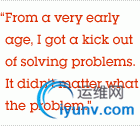
Read more
 Ronald Fagin
Ronald Fagin
IBM Research Manager, Foundations of Computer Science

Read more
 Vincent Hsu
Vincent Hsu
IBM Systems & Technology Group, Storage Platform
Distinguished Engineer, CTO Disk Storage system
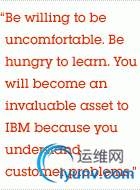
Read more
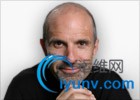 Jeff Jonas
Jeff Jonas
IBM Software Group, Information Management
Chief Scientist, Entity Analytics

Read more
 Ruchir Puri
Ruchir Puri
IBM Research
Manager, Logic & Physical Synthesis; Member, IBM Academy of Technology; IBM Master Inventor
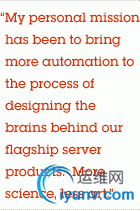
Read more
 Balaram Sinharoy
Balaram Sinharoy
IBM Systems & Technology Group, Technology Development
DE, POWER Processor
Hardware Architect: System on Chip (SOC)
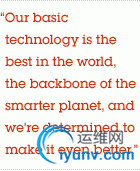
Read more
Fermer [x]
Never mind what the Beatles sang: back in the USSR was no place to be for this ambitious young woman.
Luba Cherbakov's winding journey to becoming an IBM Fellow—the 13th woman to achieve the honor?began with her decision to leave her native Urkraine.
"In the late 1970s and early 1980s, there was a short window of opportunity when the Soviet Union allowed people of Jewish descent to immigrate to the West. My family is of Jewish heritage. I wanted to escape state-sponsored persecution of Jews and I knewI'd have more opportunity outside of the Soviet Union," Luba related. "I was young and had no fear. It was hard to leave my parents, but I knew it was the right decision."
With a two-year-old daughter in tow, Luba moved to the United States, first settling in Maryland. The young mother waited tables to make ends meet while earning a degree in computer science at the University of Maryland. She continued her graduate studiesat George Washington University. "My English was poor, so it wasn't easy. But I was very determined and carried my Russian-English dictionary everywhere," Luba said. "I had a great love for math and science I had inherited from my father, who was a machinistand loved to do math brain teasers with me."
After walking away from an initial job opportunity at IBM, Luba worked for several smaller IT firms as a solutions architect before joining IBM's services arm. She joined IBM's fledgling business innovation services, working on first-of-a-kind on demand,e-business and grid computing solutions for clients in various industries. She helped establish IBM's presence in these new market segments.
Luba spearheaded, co-invented and was the chief evangelist behind the development and deployment of the Service-Oriented Modeling and Architecture (SOMA), the industry's first SOA modeling method. IBM services practioners use it to architect solutions ina consistent repeatable way.
A rising star in the services technical ranks, Luba was encouraged by Nick Donofrio, IBM's executive vice president at the time, to try a rotational assignment in the IBM CIO organization—the group responsible for all of the company's internal technology."My services colleagues thought I was nuts to leave a client-facing role with all those billing opportunities, but it turned out to be a great chance to learn how IBM really works."
The outgoing leader with the distinctive Eastern European accent quickly became a powerful force for innovation inside IBM. Luba invented and drove the implementation of the industry-first Situational Applications Environment (SAE) that unleashed the powerof enterprise mashups in IBM. Situational applications, a term Luba coined, are a quick way to develop applications to address a targeted business need.
The new Fellow has been at the forefront of IBM's transition into a social business. Many of the On Demand Workplace features IBMers use on a daily basis—from expertise locator to w3 tagging to media library—are the handiwork of Luba and the CIO innovationteam she led for several years. One of her personal favorites: Faces, a popular people search tool and first IBM application to employ Hadoop, the Java-based distributed platform. "More than 130,000 distinct users a month," Luba noted. "Once employees tryit, they love it."
Luba and her avatar became well known in IBM Virtual Spaces and she often speaks to clients about how social software and virtual worlds can promote collaboration across a global enterprise. She has used her expertise in 3-D technology and spatial modelingin the IBM partnership with The Nature Conservancy on the Rivers for Tomorrow Project, a site where watershed managers can model and analyze the health of local freshwater river basins.
Recently, Luba took on a new corporate role as the director of technology evaluation, where she works with other technical leaders across IBM to identify disruptive technologies and to align the company's technical muscle behind IBM's key growth plays.
Moving on to a new challenge is second-nature to this émigré.
"I understand myself," said the new Fellow, who spends her spare time working with her hands—gardening, making pottery and building houses for Habitat for Humanity. "When I've learned a subject really well, I'm ready to learn something new. If I feel comfortable,it's time for a move."
Fermer [x]
Just call him Mr. Fix-It.
From assembling clocks to building the world's faster supercomputer, new IBM Fellow Paul Coteus has spent his life solving problems, big and small.
"As a kid, I'd take a clock apart and put it back together again so it worked. The family car would break and I'd figure out how to fix it," the Illinois native recalled. "From a very early age, I got a kick out of solving problems. It didn't matter whatthe problem."
For the past two decades, the IBM Research scientist based in Yorktown has tapped into his problem-solving gene to tackle some of the thorniest technical challenges in the field of high performance computing. Paul was one of the chief engineers behind BlueGene/L,which rocked the world of supercomputing when it was introduced in 2004 and quickly earned the title, "fastest computer in the world." Paul has remained a core architect for subsequent generations of the system includingBlueGene/Q, which was announced last year and is currently number one on theGreen500 list of most energy efficient supercomputers.
"My expertise is in packaging—which essentially is everything that's not inside the chip. It covers everything outside the transistors in the chip. How you handle all the signals that leave the chip, how you connect the disk drives in, how you control largenumbers of chips, how you service chips, the industrial design, the reliability aspects," Paul explained in the measured cadence of a Midwestern engineer.
Paul's packaging innovations for the BlueGene system, which won IBM the National Medal of Technology in 2009, have been crucial to the power efficiency and reliability of a supercomputer that operates at a mind-boggling top speed of 210 trillion floatingpoint instructions a second.
The son of a tool and die maker, Paul graduated from Bradley University with a degree in physics and continued his education at Columbia University, where he earned his doctorate in physics and spent the next seven years immersed in elementary particle physicsresearch at the University of Colorado.
Since joining IBM in 1988, Paul has become the company's foremost expert in systems packaging, a field in which he has earned many of the 119 patents to his credit.
The BlueGene/L design—which bundled together 100,000 processors and 7 million memory chips—presented a daunting packaging problem, which Paul solved with several key innovations, including a clever design that minimized external cabling. "I'm extremely proudthat the massive system is still running at Lawrence Livermore, still turning out science, still efficient, with remarkable reliability. It was designed to run a long time, and they've certainly gotten their money's worth."
What does this IBM Fellow look for when hiring up-and-coming technologists?
"The first thing is they have to have that fire in the belly and really love what they do. Next, I look for people who can express themselves clearly. They can explain the problem and their solution without going on for 45 minutes. Finally, they need quitea bit of knowledge accumulated. They have the horsepower to do the job. There are a lot of smart people. But I want people who are really excited and can explain what they are doing."
Paul directs his gaze beyond the horizon.
"Our grand challenge is by end of decade to create a computer that is 50 times more powerful than the BlueGene/Q we're working on now. The stakes are much higher now. The teams are larger, the problems much more difficult. You have to coordinate the activitiesamong more people now. It's a global race. For IBM to succeed in this extremely competitive and difficult area is an enormous problem, and I love solving problems."
Fermer [x]
What do you want to be when you grow up?
Pose that question to a junior high boy in Oklahoma, and you might expect him to answer fireman or cowboy or oilman or professional football player.
But not Ron Fagin. "My answer was mathematician. From the moment I was introduced to geometry, I fell in love with mathematics. I knew what I wanted to be."
In the elite universe of the numerically gifted, Ron is known as a world-class mathematician. Today, he's also known as an IBM Fellow.
A fixture at IBM's Almaden Research Center since it opened 25 years ago, Ron is the creator of the field of finite model theory, the mathematical logic underpinning all relational database systems. Fagin's Theorem, which he proved in his doctoral thesis,gives a connection between mathematical logic and computational complexity theory. In his thesis, he also proved the zero-one law of first order logic, which has been called "one of the most beautiful theorems in mathematics." The math maestro's work has beencited in academic publications more than any other computer scientist in IBM.
The son of an attorney and a former school teacher, Ron opened a geometry book in junior high and knew he'd found his calling. "I was fascinated by the idea of proving things. Here was a subject where you didn't just memorize, you had to prove your logic.That really excited me."
After winning state-wide math and chemistry competitions in high school, Ron earned admission to Dartmouth College. At the Ivy League school, the math prodigy from Oklahoma City worked as a research assistant to the renowned scholar John Kemeny, who helpeddevelop the Basic programming language and, early in his career, was Einstein's mathematics go-to guy at Princeton. "I remember Kemeny kept a bust of Einstein on his desk and I asked him once why Einstein, of all people, would need help on math," Ron recalled."He told me, 'Einstein was great at physics, but just okay at math'."
Ron went to graduate school at the University of California, Berkeley during the tumultuous late 1960s and early 1970s. "I even got tear gassed once," he said. "You don't want to be tear gassed. Not fun."
After completing his doctorate in mathematic logic, Ron was hired by IBM Research despite the fact that he had no background in computer science. "They thought some of my work relating logic and probability theory was interesting and told me if I'd spendtwo years in Yorktown learning computer science, they'd hire me. I said, 'sounds great.' "
After two years in Yorktown, Ron finagled his way back to the Silicon Valley and worked at the IBM San Jose Research Lab, and then became one of the original occupants when the Almaden site opened in 1986.
The timing proved as perfect as Fagin's Theorem. The future Fellow joined during the time that Ted Codd was refining his theory of relational databases that would eventually win Codd the Turing Award. Ron was also a co-inventor of extendible hashing, a dynamicdata access technique now widely deployed, including in IBM DB2®. A few decades later, the differential data backup breakthrough that Ron co-invented would dramatically improve the performance of IBM Tivoli® Storage Manager.
Over the years, "Go talk to Ron Fagin" has become a common phrase heard around the halls of Almaden when a researcher needs advice on solving a knotty technical problem. IBM Fellow Laura Haas, for example, turned to Ron when facing a major hurdle in developingthe Garlic multimedia information system. Fagin's Algorithm for aggregating fuzzy data from multiple data sets was incorporated in the Garlic system, the IBM Watson Bundled Search system, IBM WebSphere® Commerce and other products.
Along with finite model theory, Ron is most proud of having founded the IBM Almaden Computer Science Theory Group, one of the longest-running groups in IBM, and one of the finest theory groups in the world, according to the new Fellow. "We do research intheory, trying to understand fundamental scientific issues. We are also there for more practical groups to make sure their work is theoretically grounded."
The avid exerciser and rabid football fan of the San Francisco 49ers and the Oklahoma Sooners, remains as enthusiastic for work and learning as he was as a youngster taking geometry. "It was my dream to do mathematics, and working in IBM Research—surroundedby so many smart people?is so much fun. It's like I never left school. I'm still an excited student."
Fermer [x]
Become a fine young cannibal.
In essence, that's the advice new IBM Fellow Vincent Hsu gives to the next-generation technologists who aspire to follow in his footsteps.
"To become a great technologist, you always have to be willing to challenge your own success," explained Vincent, chief technology officer for disk storage systems. "The second you finish a project, it's time to think about the new idea to replace it. That'sa hard concept to learn, but it's the difference between the leaders and the hundreds of others."
Early in his career, the future Fellow learned to be wary of the status quo. "When I joined our storage development team in Tucson in 1991, IBM dominated the storage market. EMC wasn't even on the radar and then they came in with a different design and differentprice point and took big chunks of our disk business. It taught me a very important lesson about never being satisfied with your current technology and market position."
Vincent grew up in Taiwan 125 miles off mainland China, and inherited his knack for engineering from his father. "It was a poor yet hard-working country back then, and my father worked a lot of jobs. He was an engineer, artist, manager, tour guide and acook owning a restaurant. He is a very hand-on guy and believed that there is nothing he cannot learn if he put his mind into it. My parents were always finding a way to move up despite the difficulties in their lives. They taught me a lot about resiliencyand put your mind into everything you do."
After earning a degree in electrical engineering at the University of Taiwan, Vincent jumped at the chance to attend graduate school at the University of Arizona, where he studied computer engineering and earned his masters in computer and electrical engineering.Eager to stay in Tucson, the young immigrant was happy to score a job offer from IBM, a consistent, innovative company with a prestigious reputation in stark contrast to the here-today, gone-tomorrow businesses he'd seen his father work for.
In 2001, Vincent earned his stripes as a Senior Technical Staff Member after leading the team that delivered FICON support two years early, connecting System z with IBM's storage systems—an advance that gave IBM a stranglehold on mainframe-attached storage.He followed that up by leading the development of the DS8000, which launched in 2005 and remains a key part of IBM's storage portfolio.
Vincent, who earned an MBA at night to bolster his business know-how, is heads down on the fourth generation of easy tier, a storage virtualization function that automatically moves data to the right place at the right time to meet the right price and performancelevels. "We are transforming storage from a passive device to a smart system that will be able to learn, adapt and communicate. The next step we are working on with research and software teams is content-aware storage, which can actually interpret the contentof the data and its characteristics. It is the era of 'smart storage'."
Fluent in Mandarin, Vincent—who holds a black belt in karate—frequently flies to China to meet with IBM's major storage clients there, as well as with young technical talent working at labs in Beijing, Shanghai and Taipei. "The big China banks can millionsand millions of customers to support," the new Fellow noted. "The scale is tremendous. They place a premium on business continuity in such a large scale. So the system design has to take the whole solution stack and the instability of the infrastructure intoconsideration and maintain the best level of quality of service. These are very difficult problems—scale, low latency, the ability to manage no matter what the contingency. These are the problems IBM likes to solve. And that is why IBM storage is number onein the GCG market."
Vincent, who mentors more than 30 next-gen IBMers worldwide, often brings young technologists along to client meetings. "I see a lot of myself 20 years ago in many of these engineers. They are ambitious and they work hard, but many of them lack confidencein front of the customer. I often remind them, you can't learn problems in lab. You always have to be with people. Be willing to be uncomfortable. Be hungry to learn. You will become an invaluable asset to IBM because you understand customer problems."
Fermer [x]
Jeff Jonas may well be the only high school dropout to become an IBM Fellow.
Then again, there's nothing conventional about this self-taught software savant and swashbuckling entrepreneur. A survivor of bankruptcy, a broken neck and three divorces, this new Fellow has packed enough living into his first 47 years to fill three orfour lifetimes. In 1988, he was paralyzed briefly with a fractured vertebrate after a car salesman crashed a BMW while taking Jeff on a high-speed test drive. Jeff has since completed 24 full-distance ironman events.
The son of a dentist and an attorney, Jeff grew up in northern California and fell in love with computers as a young teenager. In the summer after his sophomore year in high school, Jeff wrote a word processing program which he later sold to the Los AngelesSchool District for a few hundred dollars. "You can do something for fun and get paid for it? I couldn't believe it," Jeff recalled. "I was hooked."
Intoxicated by that early success, the future Fellow dropped out of high school, took the GED, entered junior college and began working as a subcontractor writing computer programs. Soon, he left school altogether and launched his first software company,designing accounting systems for small businesses.
"When I was 20 years old, my company went bankrupt. I lived in my car for a while and had a revelation about what I had done wrong. I was trying to build sophisticated systems without a blueprint. You wouldn't build a doghouse without a blueprint, let alonea system to run your business."
Jeff decided to start another company—Systems Research and Development (SRD) —despite still living out of his car. "It wasn't easy getting clients. I was bankrupt, living in my car, a kid with no education. I told customers I'd charge $600 a day, but theywouldn't have to pay me until I was done. And if it took me longer than I said, I'd pay them $100 a day."
The revived entrepreneur soon was building rock-solid accounting systems for small businesses and non-profits in California. After a few years, Jeff's innovative technology caught the eye of consultancy Ernst & Young, which began subcontracting to SRD forlabor reporting, inventory management and other back-office systems for clients across the United States.
They say what happens in Vegas stays in Vegas; in Jeff's case, occasional business trips to the Sin City made him want to stay and learn the inner workings behind the glittering facades of the big casinos.
The colorful software personality fit the Strip like a well-coiffed Elvis impersonator. "I fell in love with Vegas and Vegas fell in love with me," quipped Jeff, whose annual New Year's Eve bashes became legendary even in a town known for its parties.
Jeff designed and implemented a first-of-its-kind paperless employment system for Mirage Resorts, which was engaged in a massive hiring effort in advance of the grand opening of the Bellagio Hotel and Casino. "Later, I became very involved in automatingcasino security," Jeff recalled. "Casinos can lose their gaming licenses if they do business with bad guys on the regulators' exclusionary list. At SRD, we developed a technology known as Non-Obvious Relationship Awareness (NORA), which is a way to out-smartthe bad guys and identify cheats on the exclusionary list even if they are using aliases."
This technology—which is used by law enforcement and in various industries requiring industrial-strength fraud detection—made SRD an attractive acquisition target as IBM sought to enhance its security software analytics portfolio. In 2005, IBM acquired SRDand the NORA product, currently in its in fifth generation, is now known as IBM InfoSphere® Identity Insight.
Not forgetting his past, Jeff's first step after the acquisition was to repay his creditors from his bankrupt firm—with 20 years' compound interest. "Most people didn't think I'd stick around after the acquisition," Jeff said, "but I found a lot of totallycommitted, smart people at IBM. The scale of IBM also appeals to me, and the amount of innovation underway in the area of analytics, big data and security is also very exciting."
The new Fellow has been working with a small team on a big data sense-making technology that he calls G2. This technology helps organizations make better decisions faster while transactions are still happening. If all goes to plan, Jeff said, "G2 will beavailable later this year, in a form factor that is extremely easy to use." For more, see Jeff'sblog.
Conceding that his formal education was "insignificant and unremarkable," Jeff is excited to be joining the exalted ranks of IBM's top technical minds. "My goal is to become a great Fellow. I'd like to think, if you like what I've done, wait 'til you seewhat I'm going to do next. The best is yet to come."
Fermer [x]
Focus on the work, not the reward.
That philosophy is stitched into the soul of Ruchir Puri, whose journey to becoming an IBM Fellow began in Kurukshetra, a sacred place in Hindu mythology on the broad plains of northern India not far from the Himalayas.
"In Bhagavad Gita, India's famous epic story, Sri Krishna gave a famous sermon on the battlefield," Ruchir explained, "and his message was, focus on the work and don't worry about what you are going to get at the end. I always took that to heart."
The son of two college professors, Ruchir grew up on the university campus at Kurukshetra. "My mother always said, 'our family was not rich in money, and knowledge was our greatest asset'," said Ruchir. "My parents gave me a lot of leverage to explore freely,which was the biggest influence on me. I would spend hours making things with recycled materials, painting on canvas and tinkering with electronics." Like his parents, Ruchir earned a doctorate (his in computer engineering) but unlike them, his penchant forhands-on engineering took him away from the world of pure academia into IBM Research.
During his 17 years at IBM, Ruchir's focus has remained steadfast on the intricate work of microprocessor design, a process that has transformed dramatically over that time. Ruchir is a big reason why. The new IBM Fellow—equipped with a keen technical intellect,vision, and a prodigious work ethic—has been the driving force behind revolutionizing IBM's chip design process, historically a manually intensive undertaking.
Over the last 25 years, the complexity of chip designs has grown exponentially. In order to keep the design team sizes from growing at the same rate, new tools and methodologies automated the processes for producing cost-competitive silicon. Still, due totheir performance demands, design of most high-end microprocessors remained a labor intensive art, according to Ruchir. "My personal mission has been to bring more automation to the process of designing the brains behind our flagship server products," thenew Fellow said. "More science, less art."
Through a series of innovations, Ruchir and his team created software tools and design methodologies that have fundamentally transformed the way IBM microprocessors are designed, virtually eliminating custom hand designs.
The design of the Power7 processor was a tipping point in that transformation, as Ruchir led the design automation methodology innovations to ensure the timely delivery and success of this crucial processor. "It was the hardest I've ever worked, late nightsand weekends, and it went on for months," recalled the former competitive roller skater and avid hiker, who makes it a point to visit a national park every year with his wife and two daughters.
Also an IBM master inventor, Ruchir has earned more than 25 patents with another 25 pending for his work automating the design of high performance and low power circuitry with a range of innovative techniques in logic synthesis, physical design, and circuitdesign and analysis.
Ruchir, an Institute of Electrical and Electronic Engineers (IEEE) Fellow, has never completely left the classroom. He's been an adjunct professor at Columbia University and an Association of Computing Machinery (ACM) distinguished lecturer at leading engineeringuniversities around the world. He's also a frequent speaker at chip design conferences, where he pushes his views on automation.
The Fellow has taken a personal interest in retaining and training high-potential IBM technical talent in his native country. One of the biggest changes he's seen at IBM during his tenure has been the "exponential growth in IBMers in India," as he puts it."What's most impressive is the growth in engineering talent. The STG Bangalore lab, for example, is playing an important role today in designing our next generation of microprocessors."
Ruchir describes his appointment to Fellow as "an incredible honor."
"We must continue to evolve our design process in order to meet the demands for increasingly complex chips that are the brains behind the smarter systems," he said. "In that evolution, logic design is the next big frontier."
Fermer [x]
It wasn't exactly an auspicious beginning.
When future Fellow Balaram Sinharoy joined IBM in 1992, he was looking forward to launching a career at a stable company. Instead, he joined a troubled business that was hemorrhaging money, losing clients and shedding thousands of employees. "It was chaos,"Balaram recalled. "In my first year, I had five managers and they cut about half the staff. I was a new employee, fresh from graduate school with no prior job experience. I was just trying to survive."
Fortunately for Balaram, that rocky first impression was not a harbinger of things to come. The Calcutta native, who came to the United States to attend graduate school, has been one of the main minds behind the design of the POWER microprocessor, the technologythat has propelled IBM's huge gains in market share in the competitive Unix space.
Balaram, who holds a doctorate degree in computer science from Rensselaer Polytechnic Institute and more than 80 patents to his credit, proved early in his career to be a deep—and prescient—thinker. In the mid-90s, the microprocessor industry was at a crossroad.Within the industry and IBM, there was vigorous debate on what architecture to invest in. "I evaluated the VLIW (Very Long Instruction Word) processor technology and recommended that this should not be the strategic direction for IBM's server business. Intelmade the decision to go in that direction. We decided not to follow Intel. In retrospect, it was the right decision."
Following that work, Balaram joined the original POWER4 processor design team and developed some of the underlying algorithms that were instrumental in making the POWER4 the highest-frequency, highest-performing processor in the industry, reaching a recordof one million transactions per minute in the largest system. Some of those algorithms have remained a base component of subsequent generations of the industry-leading processor—including POWER7.
POWER7, which was released in 2010, was a major evolution from the POWER6 design. Balaram and his team devised a chip that can run 32 simultaneous tasks—with eight cores and four threads per core—delivering more than four times the performance of the previousgeneration processor chip, while consuming the same power. A single POWER7 chip is capable of processing more than a million transactions per minute—as powerful as the largest POWER4 system built with 32 processor chips.
In a field devoted to seeing how many angels can sit on the head of a pin, Balaram says the best microprocessor architects find the balance point between price and performance. "You need knowledge in many parts of the science of chip design and the softwarethat runs on it along with strong quantitative skill. But you also need an intuitive sense of what will work in the marketplace. What features you can add that significantly increases the customer value without adding too much cost or power to the system."
To stay current with market requirements, the genial engineer meets frequently with clients. "It's very helpful to hear about their pain points and take those into consideration when our design team is working on the next generation architecture."
The new Fellow, who splits his time between IBM offices in Poughkeepsie, New York, and Austin, Texas, is now heads down leading a large team across IBM Systems and Technology Group, IBM Research and Software Group focused on next-generation POWER technology."In terms of performance and features, nobody comes close to us. Our basic technology is the best in the world, the backbone of the smarter planet, and we're determined to make it even better."
Having joined at the worst of times for IBM, the star technologist and new father is now enjoying the best of times, personally and professionally.
"We have an advantage over other competitors—we have all the capabilities in-house from silicon technology to hardware systems design to systems and application software development," said Balaram, the first IBM Fellow from the Bengal region of India. "Wedon't have to work with other companies to make things happen. We can exploit this advantage even more."
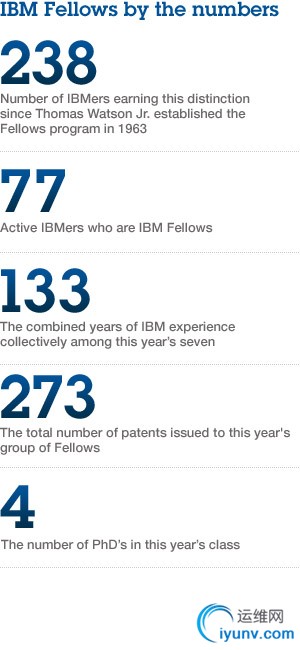
-
 IBM Research
IBM Research
See how IBM pushes the boundaries
-
 IBM Watson
IBM Watson
Go behind the IBM DeepQA project
Resources
Connect with us
- Create a profile
- Communities
- Events
- Academic collaboration
- Research collaboration
Key topics
- A smarter planet
- Analytics
- Cloud computing
- Security and resilience
- Smarter commerce
- Sustainability
Information for
- C-suite executives
- Industries
- Small and medium business
- Developers
- IBM Business Partners
- Investors
- Journalists
- Job seekers
Shop & buy
- Special offers
- Personal computers
- Ready to buy?
- Financing
- Find a sales rep
- Find a Business Partner
- IBM logo merchandise
About IBM
- Latest news
- IBM's Centennial
- IBM Research
- Corporate responsibility
- Employee directory
- More about IBM
Popular links
- Careers
- Fix central
- Passport Advantage
- Product security bulletins
- Software
- System x
- Watson
Footer links |
|